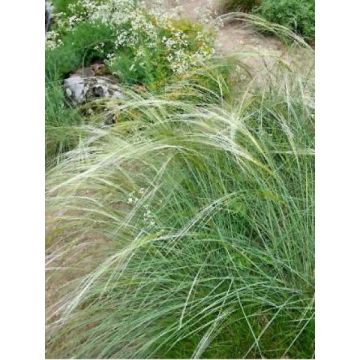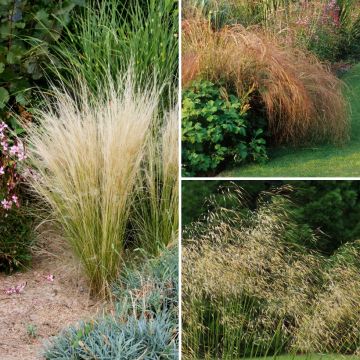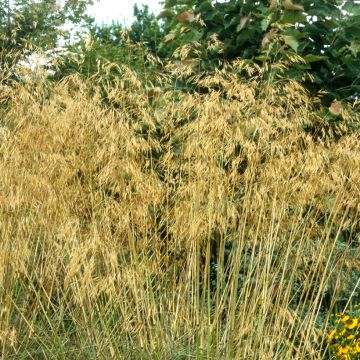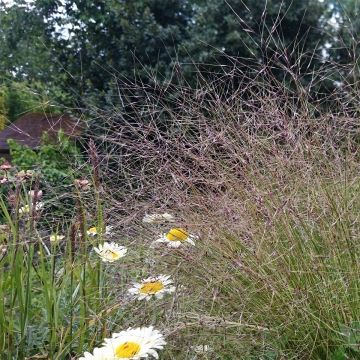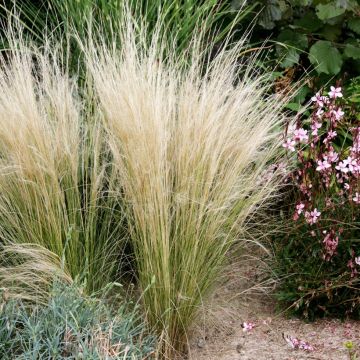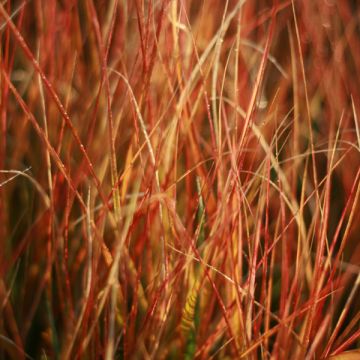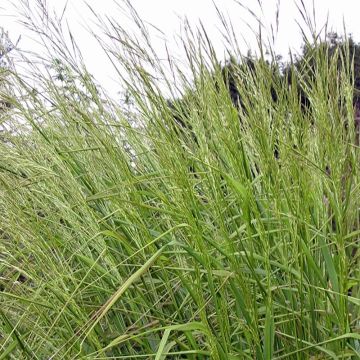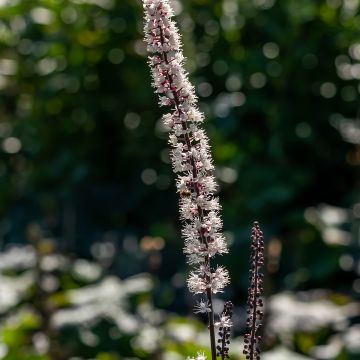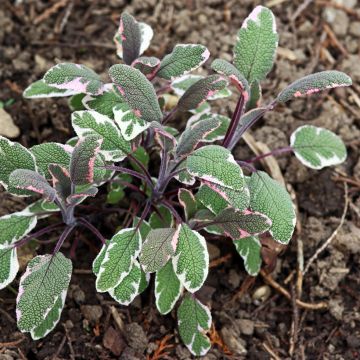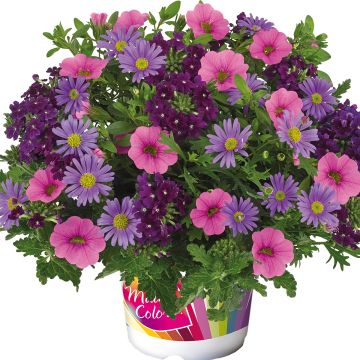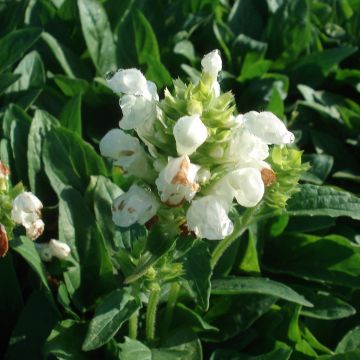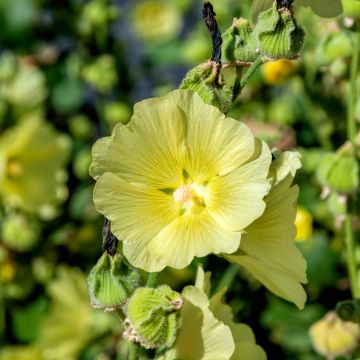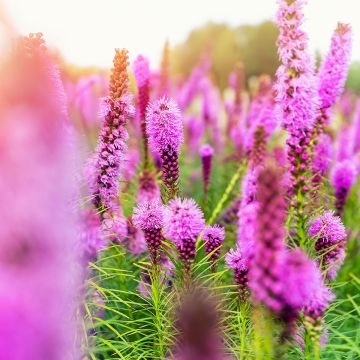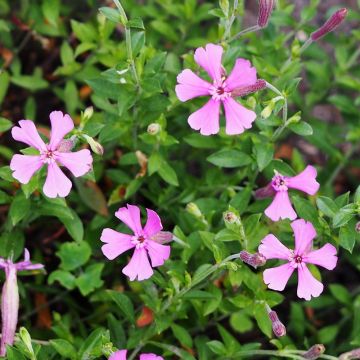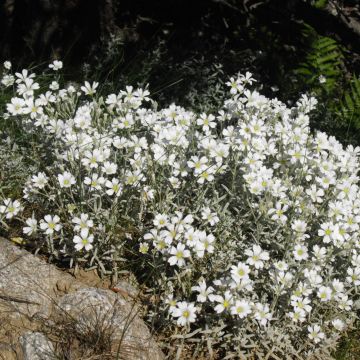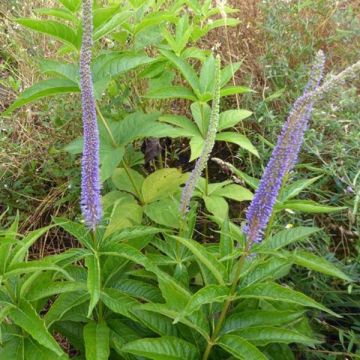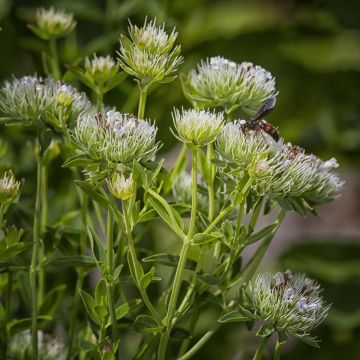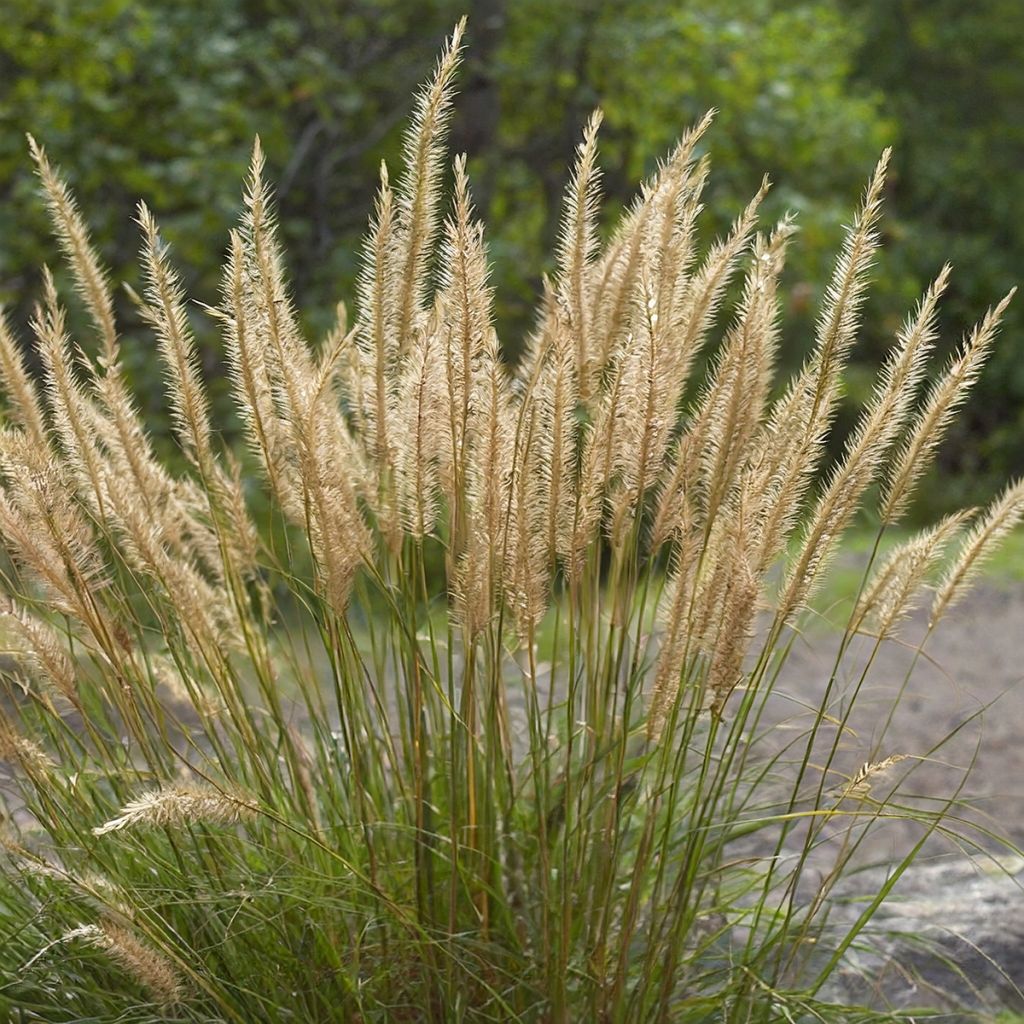

Stipa calamagrostis Allgäu - Silver Feather Grass
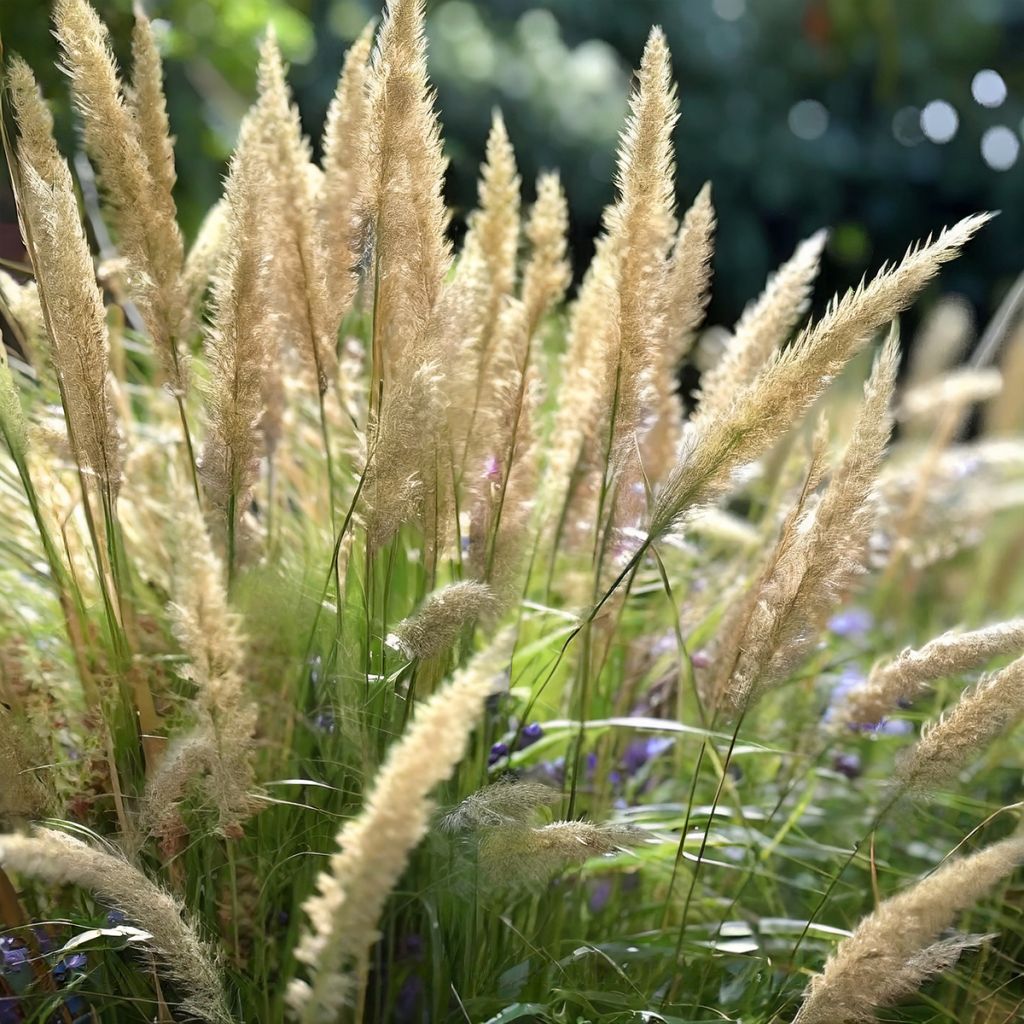

Stipa calamagrostis Allgäu - Silver Feather Grass
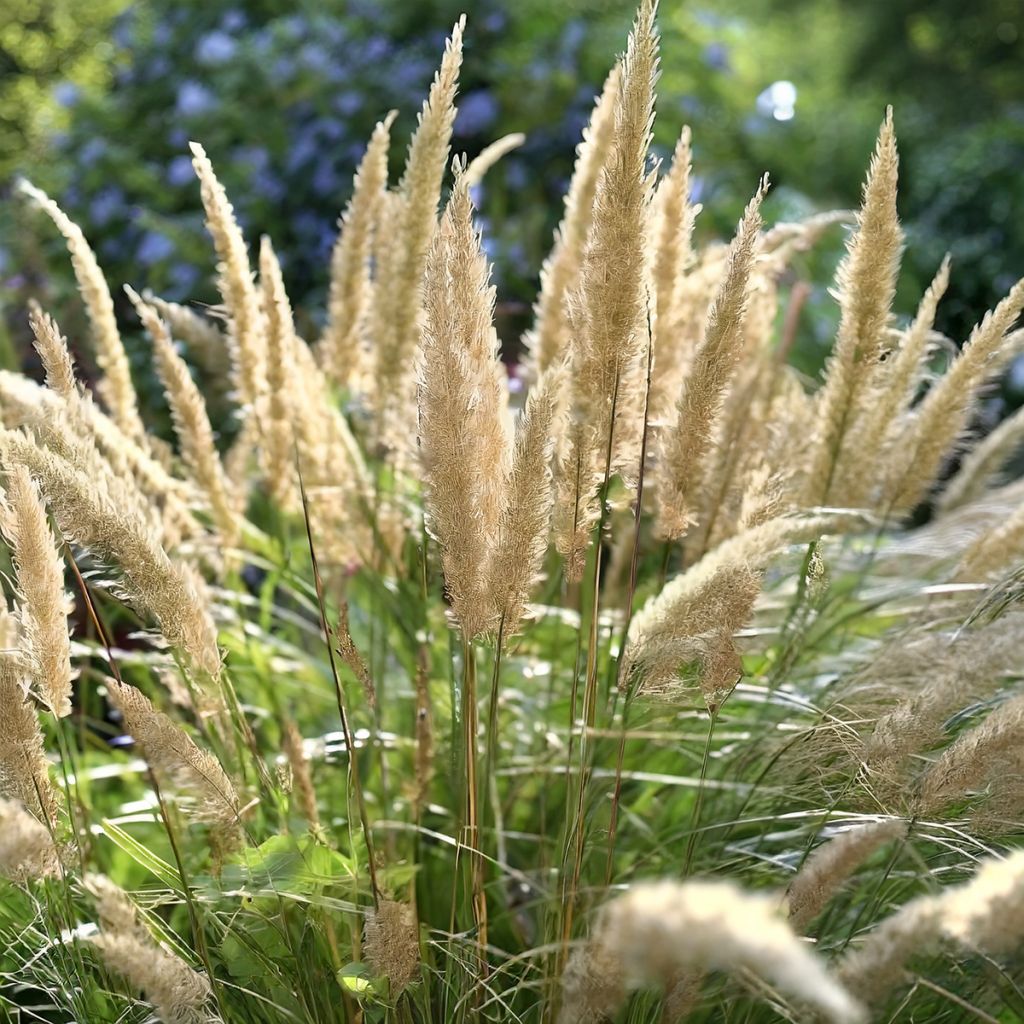

Stipa calamagrostis Allgäu - Silver Feather Grass
Stipa calamagrostis Allgäu - Silver Feather Grass
Achnatherum (Stipa) calamagrostis Allgäu
Silver Feather Grass, Needle Grass
Why not try an alternative variety in stock?
View all →This plant carries a 12 months recovery warranty
More information
We guarantee the quality of our plants for a full growing cycle, and will replace at our expense any plant that fails to recover under normal climatic and planting conditions.
From €5.90 for pickup delivery and €6.90 for home delivery
Express home delivery from €8.90.
From €5.90 for pickup delivery and €6.90 for home delivery
Express home delivery from €8.90.
Does this plant fit my garden?
Set up your Plantfit profile →
Description
The Stipa calamagrostis 'Allgäu' is a particularly decorative form of an already graceful grass also known as Achnatherum calamagrostis, the silver feather grass. It is a medium-sized grass, easy to grow in well-drained soil, well adapted to dry, even limestone or poor soils. It forms a fountain of slightly bluish green leaves from which elegant flat and feathery inflorescences emerge in summer, becoming golden brown at maturity. A flowering that remains decorative until the doors of winter. Ideal in a garden without watering, in a bed or on a slope.
The Achnatherum calamagrostis 'Allgäu' is a non-spreading herbaceous perennial plant belonging to the Poaceae family, like many grasses. The origin of the species is in the mountainous regions of central and Southern Europe, where it grows in clearings on poor and limestone soils. This turf-forming plant slowly widens without becoming invasive. It grows in dense, slightly arching tufts composed of very fine leaves, smooth on the top, finely hairy on the underside, with a slightly bluish green colour. When mature, it will measure about 1m in height when flowering and about 50cm in width. Its growth is quite rapid, depending on the growing conditions. In winter, the foliage dries in cold climates, it can remain partially green in mild climates. In summer, from June to September depending on the climate, rigid culms emerge from the tuft of leaves, bearing thin, flat, flexible, soft and silky inflorescences, silver-white, becoming golden beige in autumn. The seeds form in late summer on the spikes that remain on the plant in winter. The stump of the silver feather grass can withstand -20°C, even more, in healthy soil.
The Stipa calamagrostis 'Allgäu' is an ideal plant for dry gardens and areas with poor, rocky soil. This grass seduces with the poetry of its flowering, the grace of its foliage, and its decorative aspect for a good part of the year. Animated by the slightest breeze, the plant is shaped by the wind, sublimated by the low evening light, gently rustling, almost musical. It perfectly accompanies floriferous and light perennials such as toadflaxes, gauras, Asters for dry soil, or even annual poppies and asphodels. Dark, green or purple foliage will highlight its long hair that catches the light so well. Depending on the climate, you can choose for example a Phormium 'Dark Delight' or the Sedum 'Purple Emperor'. Bushy salvias, which flower late in the season, are also beautiful companions for grasses.
Report an error about the product description
Flowering
Foliage
Plant habit
Botanical data
Achnatherum (Stipa)
calamagrostis
Allgäu
Poaceae
Silver Feather Grass, Needle Grass
Cultivar or hybrid
Other Stipa
Planting and care
Plant Stipa calamagrostis 'Allgäu' in a sunny location, in well-drained soil, even dry in summer, limestone and poor, and even rocky or sandy. This variety tolerates limestone well, it does not like soils that are too acidic (peaty). Hardy to at least -20 °C, it fears clayey and waterlogged soils in winter. Also avoid overly rich soils that weaken the plant. A beautiful plant that thrives easily, without problems and without maintenance, once well rooted. Do not prune the foliage in winter, simply comb it in late winter with your hand (wear gloves to avoid potential cuts).
Although rightly known for their resistance to summer drought, stipas should be watered for a few months, especially during the summer following their planting. After that, these grasses will require no watering.
Planting period
Intended location
Care
This item has not been reviewed yet - be the first to leave a review about it.
Summer flowering perennials
Haven't found what you were looking for?
Hardiness is the lowest winter temperature a plant can endure without suffering serious damage or even dying. However, hardiness is affected by location (a sheltered area, such as a patio), protection (winter cover) and soil type (hardiness is improved by well-drained soil).

Photo Sharing Terms & Conditions
In order to encourage gardeners to interact and share their experiences, Promesse de fleurs offers various media enabling content to be uploaded onto its Site - in particular via the ‘Photo sharing’ module.
The User agrees to refrain from:
- Posting any content that is illegal, prejudicial, insulting, racist, inciteful to hatred, revisionist, contrary to public decency, that infringes on privacy or on the privacy rights of third parties, in particular the publicity rights of persons and goods, intellectual property rights, or the right to privacy.
- Submitting content on behalf of a third party;
- Impersonate the identity of a third party and/or publish any personal information about a third party;
In general, the User undertakes to refrain from any unethical behaviour.
All Content (in particular text, comments, files, images, photos, videos, creative works, etc.), which may be subject to property or intellectual property rights, image or other private rights, shall remain the property of the User, subject to the limited rights granted by the terms of the licence granted by Promesse de fleurs as stated below. Users are at liberty to publish or not to publish such Content on the Site, notably via the ‘Photo Sharing’ facility, and accept that this Content shall be made public and freely accessible, notably on the Internet.
Users further acknowledge, undertake to have ,and guarantee that they hold all necessary rights and permissions to publish such material on the Site, in particular with regard to the legislation in force pertaining to any privacy, property, intellectual property, image, or contractual rights, or rights of any other nature. By publishing such Content on the Site, Users acknowledge accepting full liability as publishers of the Content within the meaning of the law, and grant Promesse de fleurs, free of charge, an inclusive, worldwide licence for the said Content for the entire duration of its publication, including all reproduction, representation, up/downloading, displaying, performing, transmission, and storage rights.
Users also grant permission for their name to be linked to the Content and accept that this link may not always be made available.
By engaging in posting material, Users consent to their Content becoming automatically accessible on the Internet, in particular on other sites and/or blogs and/or web pages of the Promesse de fleurs site, including in particular social pages and the Promesse de fleurs catalogue.
Users may secure the removal of entrusted content free of charge by issuing a simple request via our contact form.
The flowering period indicated on our website applies to countries and regions located in USDA zone 8 (France, the United Kingdom, Ireland, the Netherlands, etc.)
It will vary according to where you live:
- In zones 9 to 10 (Italy, Spain, Greece, etc.), flowering will occur about 2 to 4 weeks earlier.
- In zones 6 to 7 (Germany, Poland, Slovenia, and lower mountainous regions), flowering will be delayed by 2 to 3 weeks.
- In zone 5 (Central Europe, Scandinavia), blooming will be delayed by 3 to 5 weeks.
In temperate climates, pruning of spring-flowering shrubs (forsythia, spireas, etc.) should be done just after flowering.
Pruning of summer-flowering shrubs (Indian Lilac, Perovskia, etc.) can be done in winter or spring.
In cold regions as well as with frost-sensitive plants, avoid pruning too early when severe frosts may still occur.
The planting period indicated on our website applies to countries and regions located in USDA zone 8 (France, United Kingdom, Ireland, Netherlands).
It will vary according to where you live:
- In Mediterranean zones (Marseille, Madrid, Milan, etc.), autumn and winter are the best planting periods.
- In continental zones (Strasbourg, Munich, Vienna, etc.), delay planting by 2 to 3 weeks in spring and bring it forward by 2 to 4 weeks in autumn.
- In mountainous regions (the Alps, Pyrenees, Carpathians, etc.), it is best to plant in late spring (May-June) or late summer (August-September).
The harvesting period indicated on our website applies to countries and regions in USDA zone 8 (France, England, Ireland, the Netherlands).
In colder areas (Scandinavia, Poland, Austria...) fruit and vegetable harvests are likely to be delayed by 3-4 weeks.
In warmer areas (Italy, Spain, Greece, etc.), harvesting will probably take place earlier, depending on weather conditions.
The sowing periods indicated on our website apply to countries and regions within USDA Zone 8 (France, UK, Ireland, Netherlands).
In colder areas (Scandinavia, Poland, Austria...), delay any outdoor sowing by 3-4 weeks, or sow under glass.
In warmer climes (Italy, Spain, Greece, etc.), bring outdoor sowing forward by a few weeks.

































